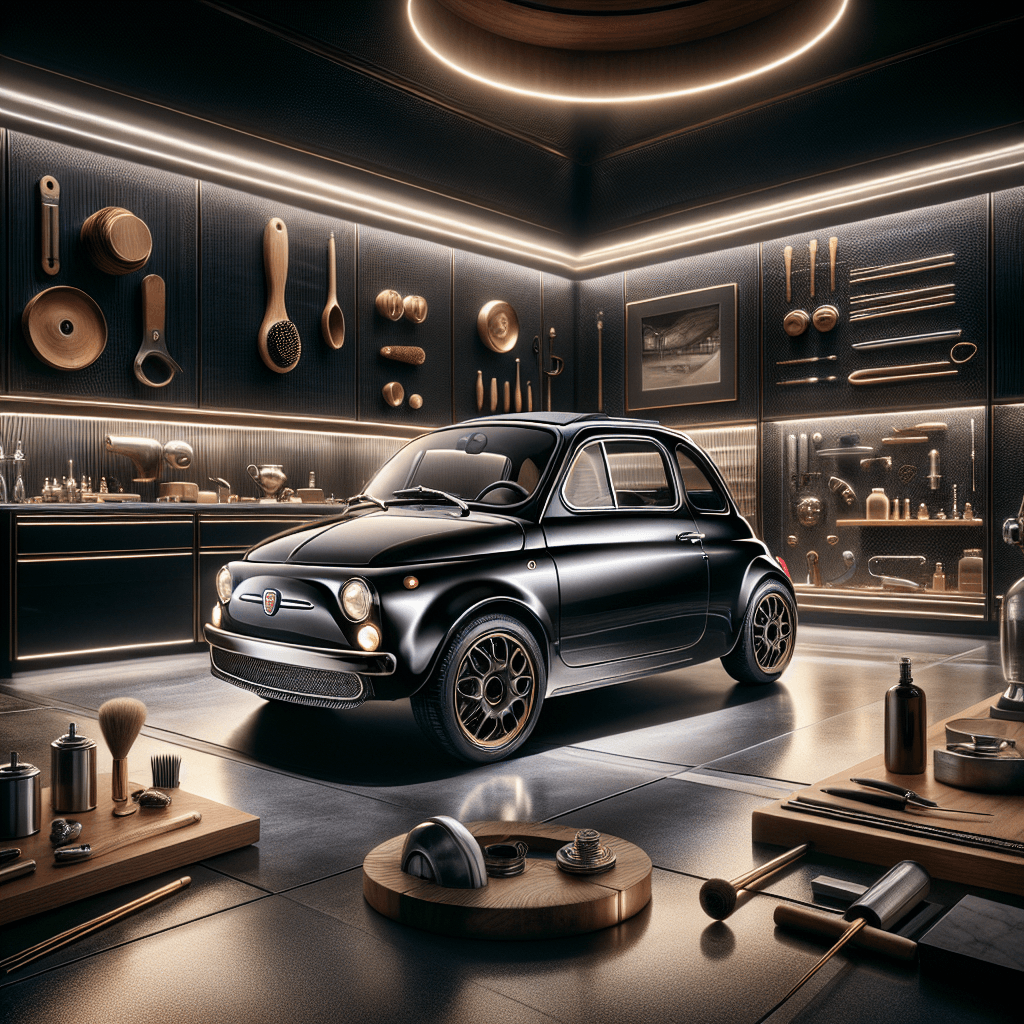How this Humble City Car Transformed Italian Mobility and Design
The Fiat 500 is not just a car; it’s a cultural phenomenon. Synonymous with Italian flair, this compact automobile has transcended its utilitarian origins to become a symbol of style, efficiency, and innovation. Its journey from a post-war solution to a modern classic reflects a broader narrative of Italian creativity and industrial genius.
- The Historical Context: Birth of the Fiat 500
- Design Evolution: Crafting an Icon
- Cultural Impact: The Fiat 500 in Italian Society
- Global Influence: The Fiat 500 on the World Stage
- Modern Renaissance: The Fiat 500 Today
- Artistic Significance: The Fiat 500 as a Design Masterpiece
The Historical Context: Birth of the Fiat 500
In 1957, Italy was a country in rebirth. The devastation of World War II had given way to an economic miracle, largely driven by industrial innovation. It was in this context that the Fiat 500 was born. Designed by Dante Giacosa, the Fiat 500 was initially created to meet the growing need for affordable and efficient transportation in a rapidly modernizing society.
The original model, known as the Fiat 500 “Nuova,” was a marvel of compact engineering. It featured a rear-mounted engine and a charming two-door design, making it perfect for the narrow streets of Italian cities. From the outset, the Fiat 500 was more than a car; it was an accessible luxury, a vehicle that promised freedom and mobility to the average Italian family.
Technological Innovations
- Rear-Mounted Engine: Optimized for space and efficiency, enhancing the car’s compact design.
- Unique Cooling System: Air-cooled to save space and reduce complexity.
- Distinctive Folding Roof: Added a sense of luxury and openness, ideal for Italian summers.
Design Evolution: Crafting an Icon
The design of the Fiat 500 is a testament to Italian craftsmanship. Over the years, it has evolved while maintaining its iconic features: simplicity, elegance, and practicality. The car’s aesthetic appeal lies in its minimalist design, which combines functionality with a unique charm.
Each model of the Fiat 500 has built on this legacy, incorporating modern technologies while preserving the car’s vintage appeal. The use of high-quality materials, attention to detail, and innovative manufacturing techniques have made the Fiat 500 a standout example of Italian design prowess.
Iconic Models
- Fiat 500 Sport (1958): Introduced a more powerful engine and a sportier look.
- Fiat 500L (1968): A luxury version that offered more comfort and upgraded interiors.
- Fiat 500R (1972): The final model of the original series, featuring a more efficient engine and a refined design.
Cultural Impact: The Fiat 500 in Italian Society
The Fiat 500 did more than change driving habits; it altered the social fabric of Italy. It became a symbol of economic recovery and democratized mobility, enabling families to explore new horizons. The car’s affordability and practicality made it a popular choice among young Italians, earning it the affectionate nickname “Cinquecento.”
Its role in Italian cinema and media further cemented its status as a cultural icon. The Fiat 500 appeared in numerous films and became associated with the glamorous life of post-war Italy. Its image was linked to freedom, rebellion, and the sweet life (“la dolce vita”).
Influence on Media and Fashion
- Cinema: Featured in classic films like “La Dolce Vita” and “Roman Holiday,” symbolizing chic urban mobility.
- Fashion: Inspired collaborations with designers who celebrated its design through limited edition models and fashion shows.
Global Influence: The Fiat 500 on the World Stage
The appeal of the Fiat 500 quickly transcended national boundaries. Its compact size, economic fuel consumption, and stylish design made it popular in urban centers around the world, from Paris to New York. The car became a symbol of smart urban transportation, appealing to those who valued both aesthetics and functionality.
Internationally, the Fiat 500 has been celebrated in various exhibitions and auto shows, highlighting its global impact as a model of sustainable urban transport and as a work of art in its own right.
International Recognition
- Museum of Modern Art, New York: The Fiat 500 is part of the permanent collection, recognized as an example of outstanding industrial design.
- Global Sales: Enjoyed popularity in over 100 countries, adapting to various markets while maintaining its Italian essence.
Modern Renaissance: The Fiat 500 Today
Today, the Fiat 500 continues to evolve. The introduction of the Fiat 500e, an all-electric version, marks a new chapter in the car’s history, combining traditional design with cutting-edge technology. This model addresses contemporary concerns about environmental sustainability while maintaining the car’s iconic status.
The modern Fiat 500 models continue to attract a global audience, proving that good design is timeless. They blend historical charm with modern needs, embodying a heritage of innovation that continues to drive the brand forward.
Current Models and Innovations
- Fiat 500e: All-electric powertrain, zero emissions, maintaining the classic Fiat 500 design.
- Fiat 500X: Expands the 500’s appeal with a crossover SUV model, offering more space and versatility.
- Fiat 500L: A larger, more family-oriented model that retains the aesthetic of the classic 500.
Artistic Significance: The Fiat 500 as a Design Masterpiece
The Fiat 500 is not just a car; it is a piece of industrial art. Its design reflects a deep understanding of form, function, and aesthetics. The car’s ability to adapt yet remain recognizably a Fiat 500 is a testament to its well-conceived design principles.
As we look at the Fiat 500 today, it stands as a reminder of how creativity and engineering can come together to create something that is both practical and beautiful. It is a vehicle that continues to inspire, not just as a means of transportation, but as a symbol of what human ingenuity can achieve.
For further exploration of the Fiat 500’s design and cultural impact, consider visiting authoritative sources such as the National Automobile Museum in Turin.



